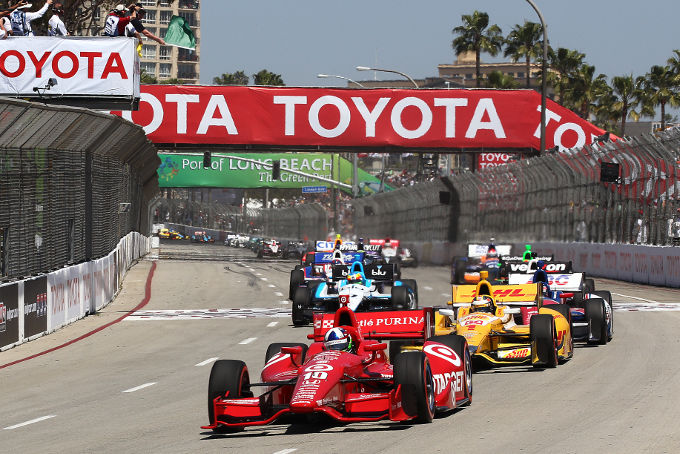For 40 years the streets of Long Beach have reverberated to the sound of racing cars. From thunderous F5000s, to high-tech F1 and through multiple generations of IndyCar, the Long Beach Grand Prix has played host to them all.
The city was in a 1970s fug when travel agent and motor racing fan Chris Pook had the idea to host a street race there. Overshadowed by more glamorous neighbours Los Angeles and San Diego, the Queen Mary aside, Long Beach needed something to put it on the map.
America was still gripped by the oil crisis in 1975 when Brian Redman took victory in the opening Long Beach Grand Prix – a race held for Formula 5000 cars. But six months later the real thing arrived as Clay Regazzoni took victory for Ferrari in Pook’s inaugural Formula 1 event.
A year later and Mario Andretti became the first American to win the US GP when he claimed victory at Long Beach for Lotus. The race continued to be a happy hunting ground for the cream of the world’s top drivers as Carlos Reutemann, Gilles Villeneuve, Nelson Piquet, Alan Jones, Niki Lauda and John Watson claimed victory over the following years.
Watson’s 1983 win – from 22nd on the grid – still holds the record for the race won from the lowest starting position.
“I can’t think of a better location for a Formula E race,” said Watson. “The proximity to LA, Hollywood and all the studios – all the stars under the sun are going to be there.
“With street tracks the circuit is evolving all the time, over the weekend it will pick up more and more grip. I enjoyed the challenge of driving between the walls, you have to find a way to make the circuit work for you – how close to a barrier can you get without making contact?”
Alas, the 1983 race was to be the last for F1 in Long Beach. Despite big crowds, the rising sanctioning fees demanded by F1 was making the race unviable. So for 1984 it became part of the CART calendar. Andretti won – a feat he would repeat in 1985 and 1987, with son Michael triumphing in 1986.
But in the CART era, there was one driver who ruled Long Beach like no other – Al Unser Jr. Between 1988 and 1995, he won the race a remarkable seven times for Galles and then Penske Racing, including five in a row from ’88 to 1991.
When Champ Car merged with the IRL at the end of 2008, Long Beach became a part of the reborn IndyCar series. Formula E commentator Dario Franchitti won the first round of the reunified series, while sometime Formula E racer Takuma Sato was victorious in 2013.
Long Beach might be the longest running street race in the USA, but the track has undergone a host of changes over years. The only constant has been the presence of the startline on Shoreline Drive.
The original 1975 layout remained unchanged all the way through to the end of 1981. For the ’82 race a host of revisions we made altering the look of the layout significantly. There were even more dramatic changes for ’83, the most notable being the removal of the Ocean Boulevard back stretch, which had been the location of the finishing line since the race started. Instead, the track was routed down Seaside Way, which it continues to do to this day.
Le Gasomet hairpin was removed for 1984, while further tweaks were made to the piece of track leading up to Seaside Way for the 1987 race. These were simplified even further in 1992, while the Marina section was added to the layout in 1999. The run from the Marina to the Tecate Turn was included in 2001 – the last major revision to the layout until this weekend’s race.
Formula E uses a shortened version of the track, with the Marina section cut out, and the cars taking a hard right at Tecate. The rest of the track – including the famous Shoreline drive startline, remains the same.
Which one of the 20 drivers will print their name in the record books next to the likes of Andretti, Unser and Franchitti?
